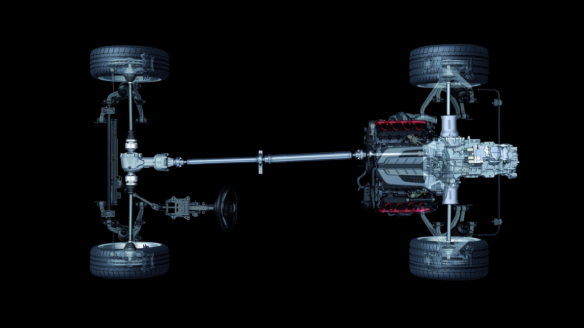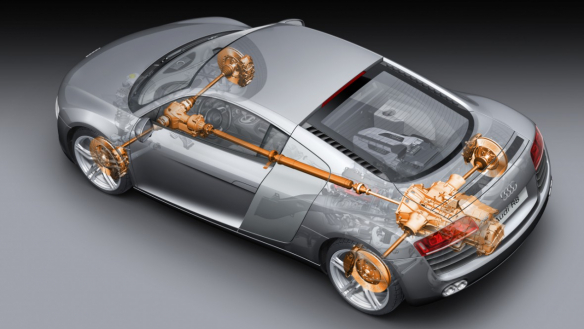Viscous coupling
The Audi R8 high-performance sports car occupies a special position in the Audi model range – and this extends to its packaging and its drive system. The mid-mounted engine is arranged longitudinally at the rear of the car in front of the rear axle, with the gearbox right behind it. It also includes an auxiliary drive for a prop shaft running past the engine on the side and up to the front axle.
There a viscous coupling distributes the power between the front axle and the rear axle, which is equipped with a locking differential. Under normal driving conditions, the coupling sends only about 15 percent of the torque to the front axle – the R8 has the rear bias typical of a sports car. If the rear wheels slip, an additional 15 percent almost immediately flows to the front.
The primary component of the viscous coupling is a package of round clutch disks, each with different gearing. One of each is connected to the prop shaft via the housing; the other is connected via the output shaft to the front axle. The clutch plates rotate in a viscous fluid. If they rotate at greatly different speeds due to a loss of traction at the rear axle, the oil becomes more viscous as a result of its internal friction. By picking up the other clutch disk of each pair, a greater torque is transferred via the drive shaft to the front axle.
Status: 2011

